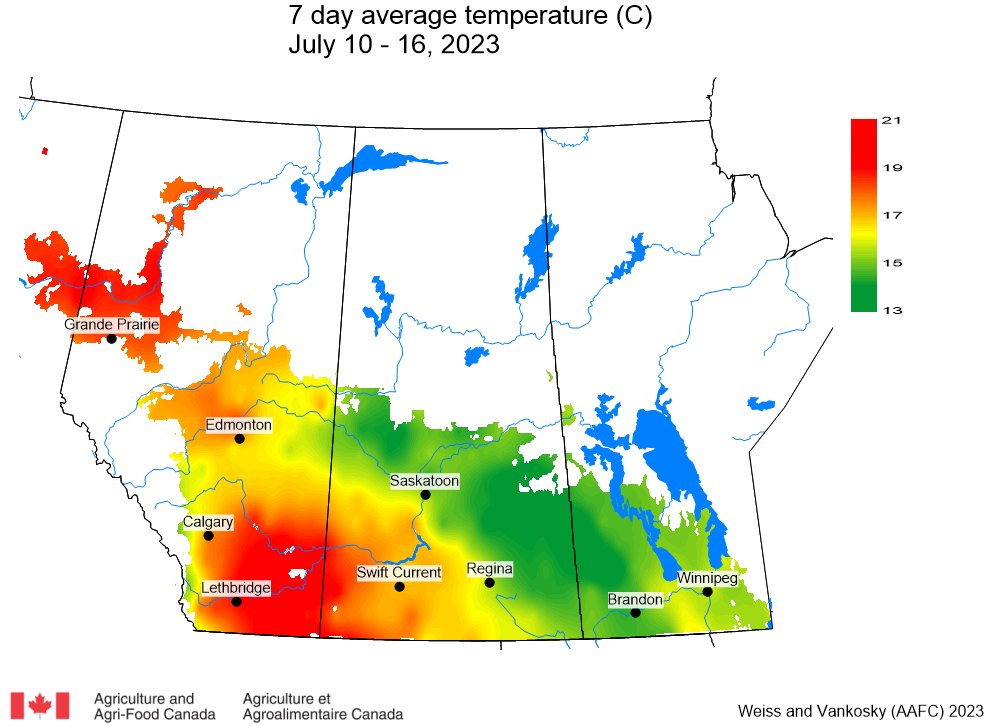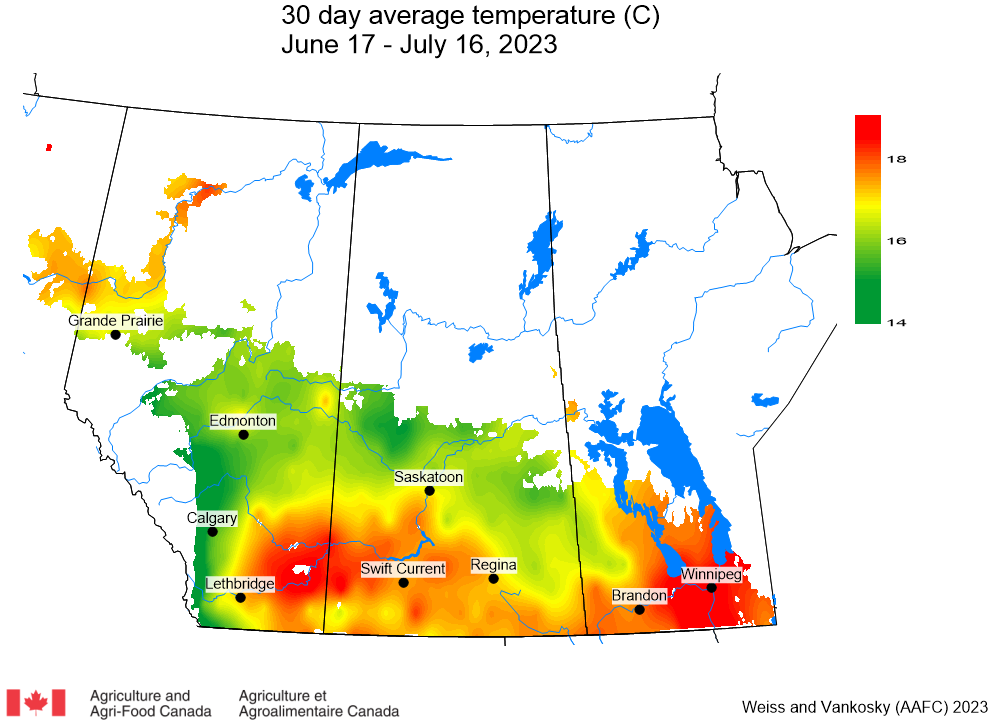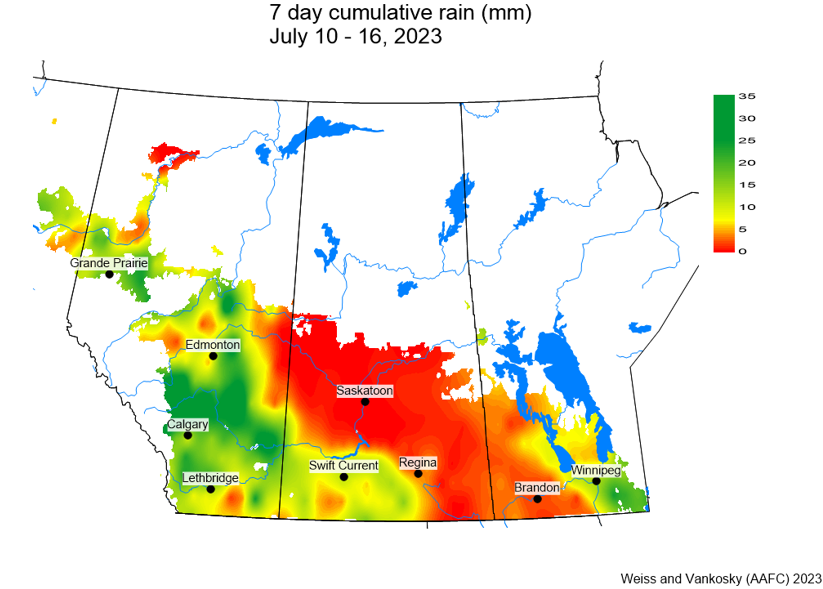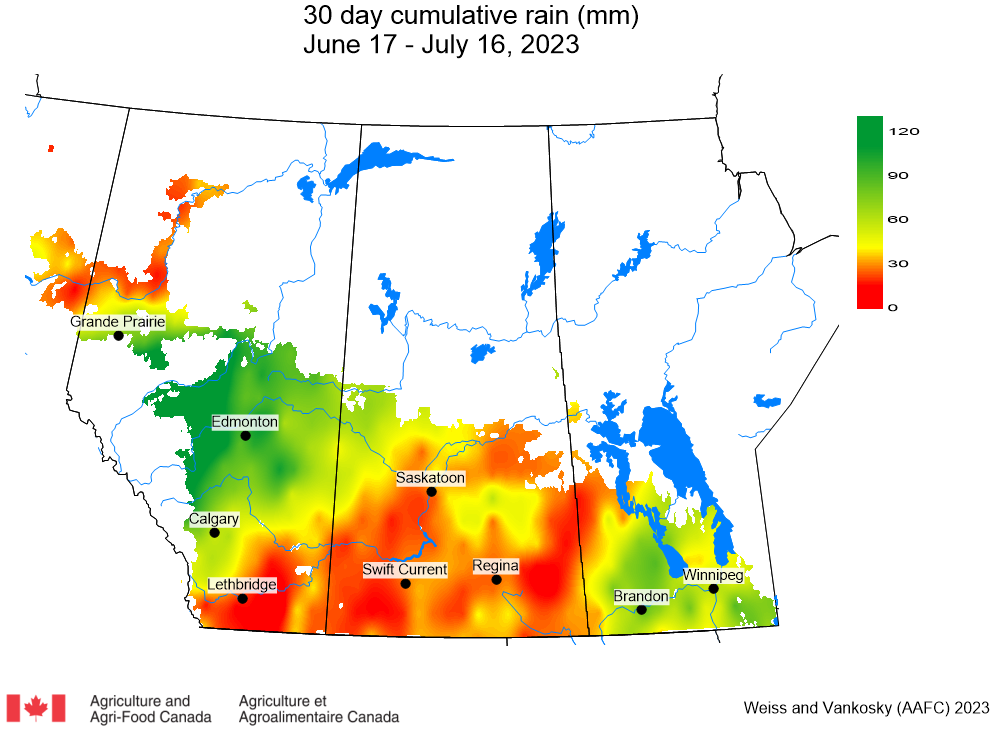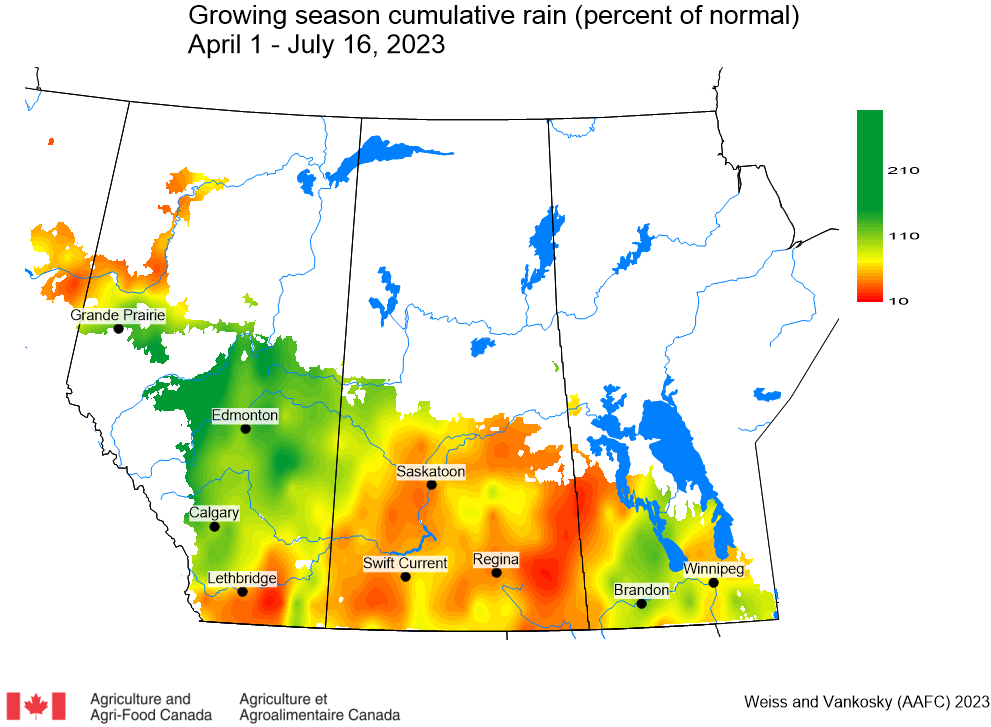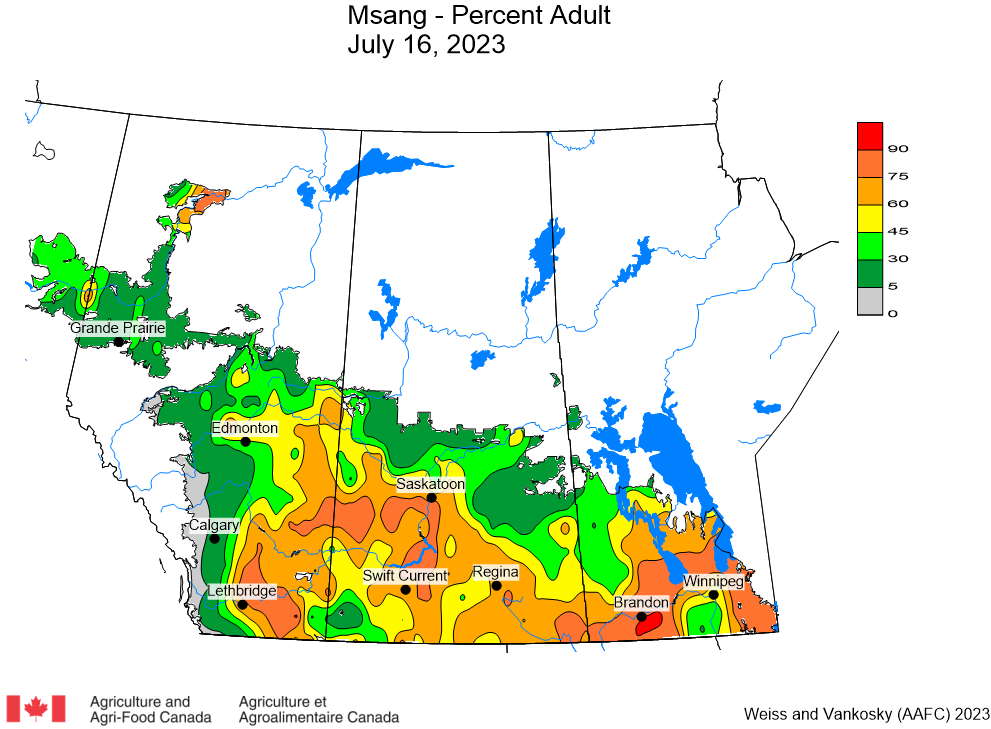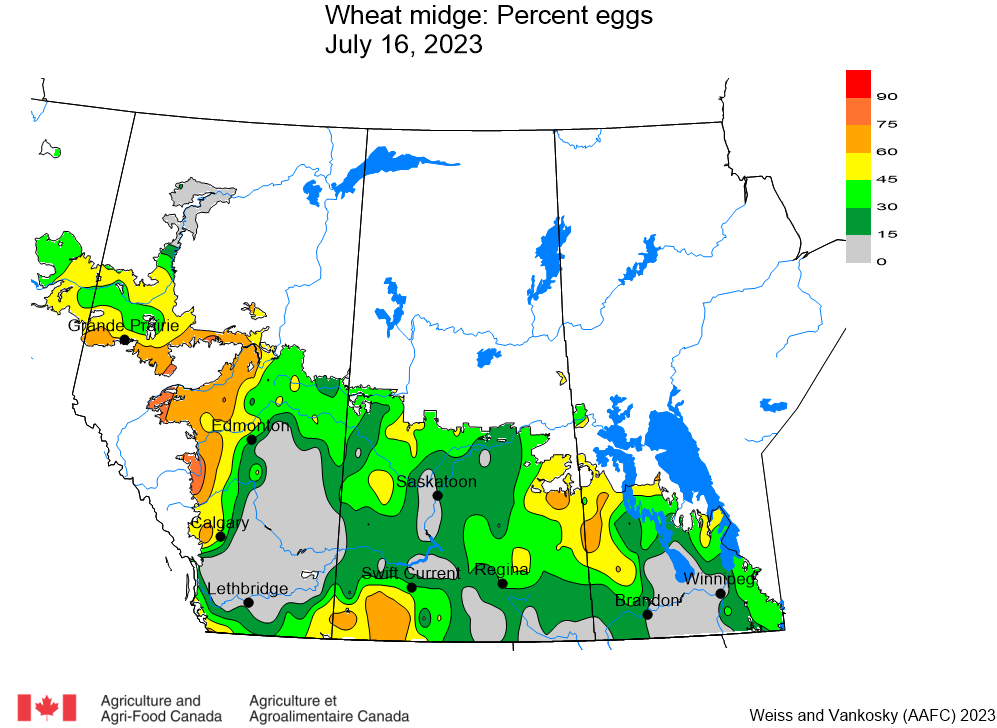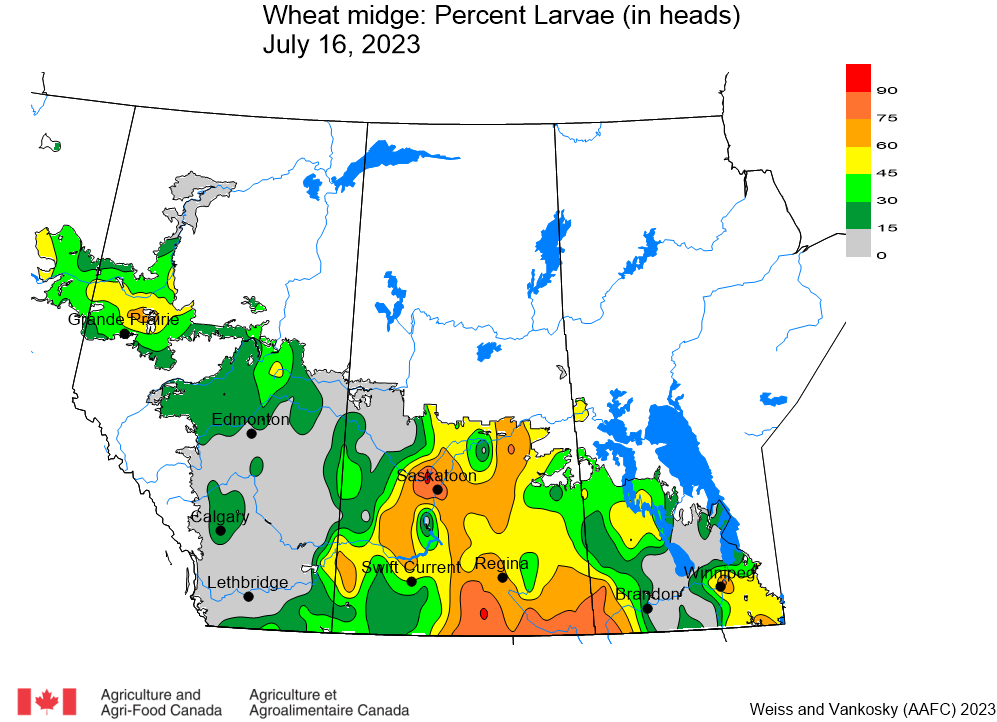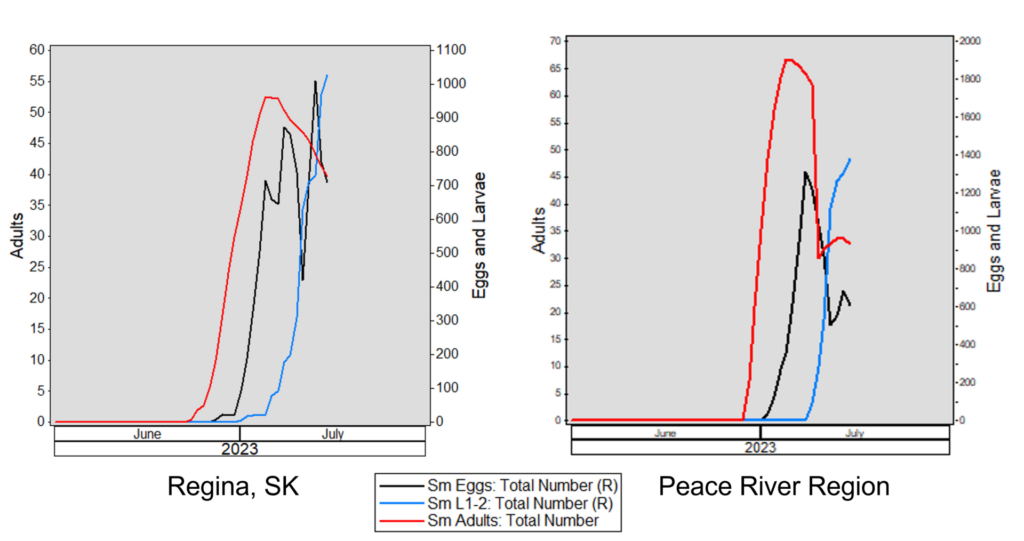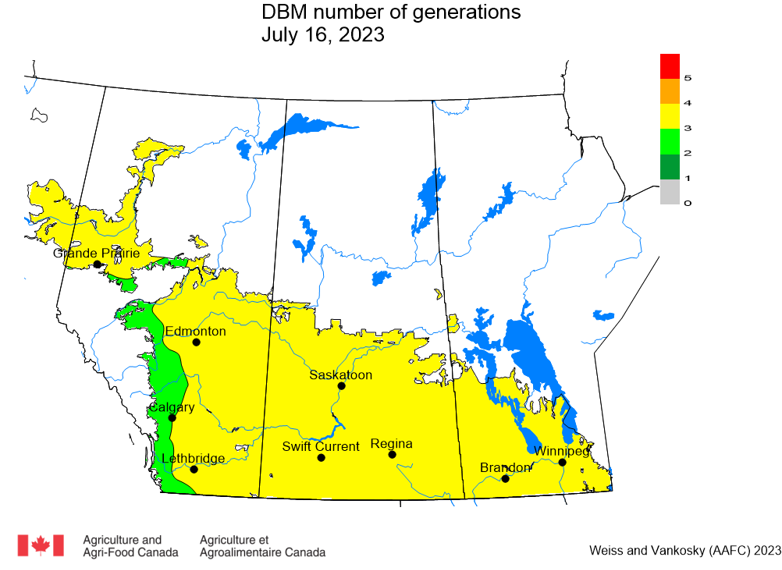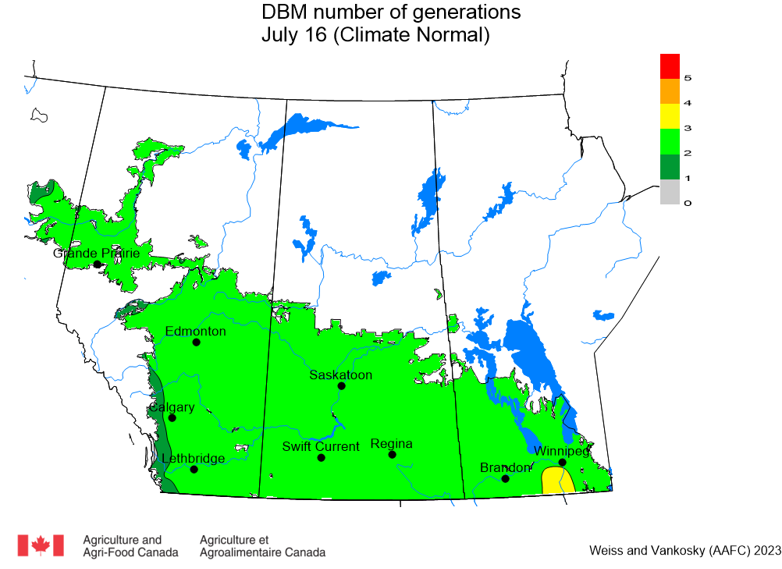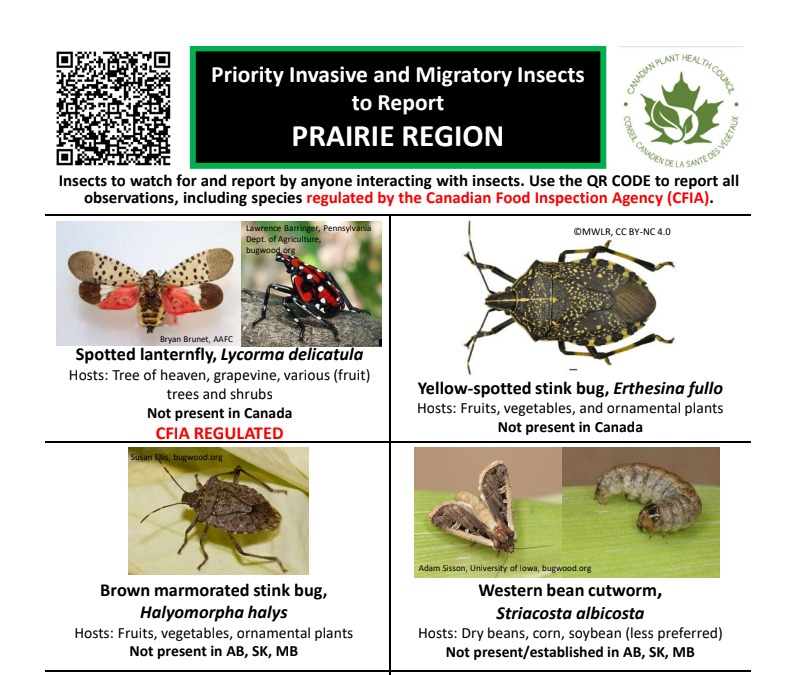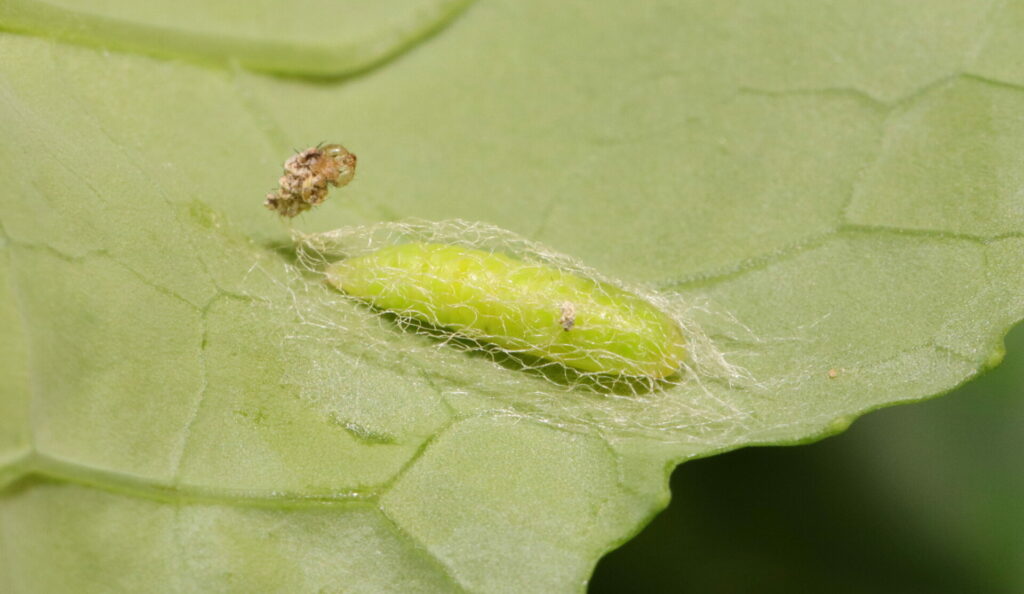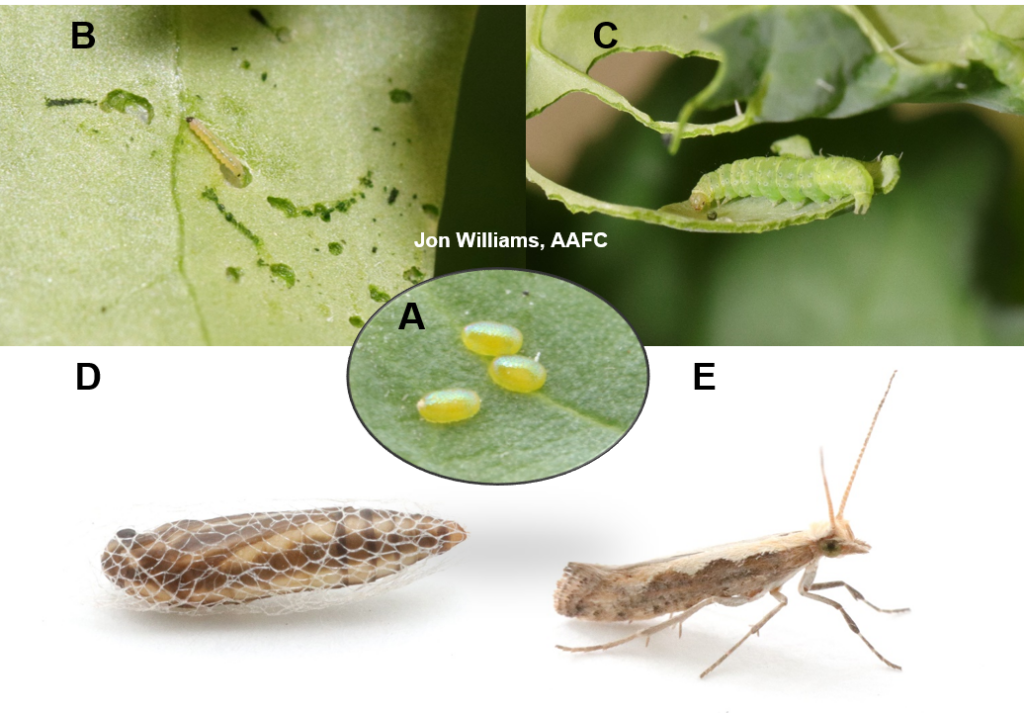Insect scouting season continues! Development of many pest insects (and of their host crops) is ahead of schedule this year, thanks to warmer than average weather during this growing season.
Adult grasshoppers are becoming more and more common across the prairies. Although grasshoppers are more widespread this year than in the past few years, the stage of grasshopper development and grasshopper population densities can vary between even relatively close locations. Scouting individual fields is important to best estimate crop risk.
Diamondback moth, if present, are into the third non-migrant generation across most of the prairies. Keep in mind that diamondback moth develop quickly in warm weather which could lead to rapidly increasing populations over the summer. Scout when you can and use the links in the Provincial Insect Updates post to learn about diamondback moth and bertha armyworm risk in your region. Diamondback moth was also the Week 11 Insect of the Week!
There is now a monitoring protocol for canola flower midge! As canola flowering finishes, it can be easy to see the galled flowers that result from infestation by canola flower midge, so the time to scout could be now. A three-year survey completed in 2019 found that canola flower midge is quite widely distributed across the prairies, but in relatively low densities and probably doesn’t cause economic yield losses. If you scout for canola flower midge this year and are willing to share your results please send them to meghan.vankosky@agr.gc.ca. If we get enough information, we will map the results!
This is a busy time for our field research programs across western Canada and with upcoming field days, we are even busier. A list of events can be found on the Prairie Pest Monitoring Network homepage and in the Week 10 update.
Watch out for Invasive and Migrating Insects! The Insect Surveillance Community Practice has created posters for the Prairie Region, BC, Ontario & Quebec, and Atlantic Canada to raise awareness of potentially invasive insects to each region. If you suspect that you have found any of the insects on the Prairie Region Poster, please let us know using the form linked to the QR code on the poster. Note: many of us entomologists on the prairies are members of the Insect Surveillance Community of Practice!
Remember: insect Monitoring Protocols containing information about in-field scouting as well as information about insect pest biology and identification are available from the Prairie Pest Monitoring Network.
To receive Weekly Updates automatically, please subscribe to the website!
Questions or problems accessing the contents of this Weekly Update? Please contact Dr. Meghan Vankosky (meghan.vankosky@agr.gc.ca) to get connected to our information. Past Weekly Updates, full of information and helpful links, can be accessed on our Weekly Update page.

